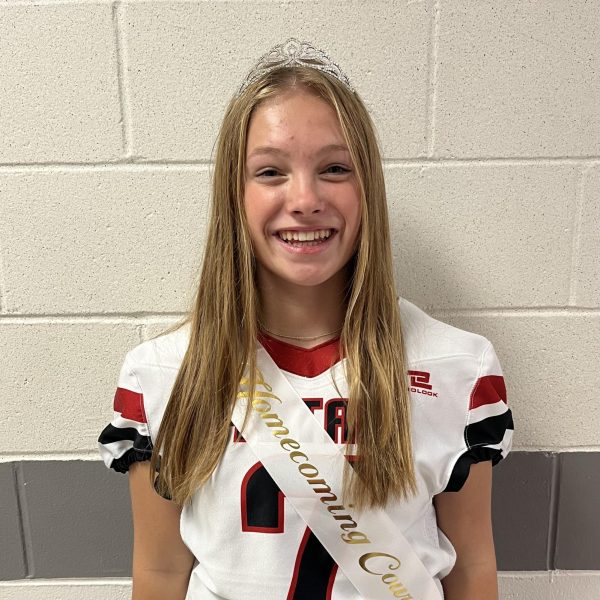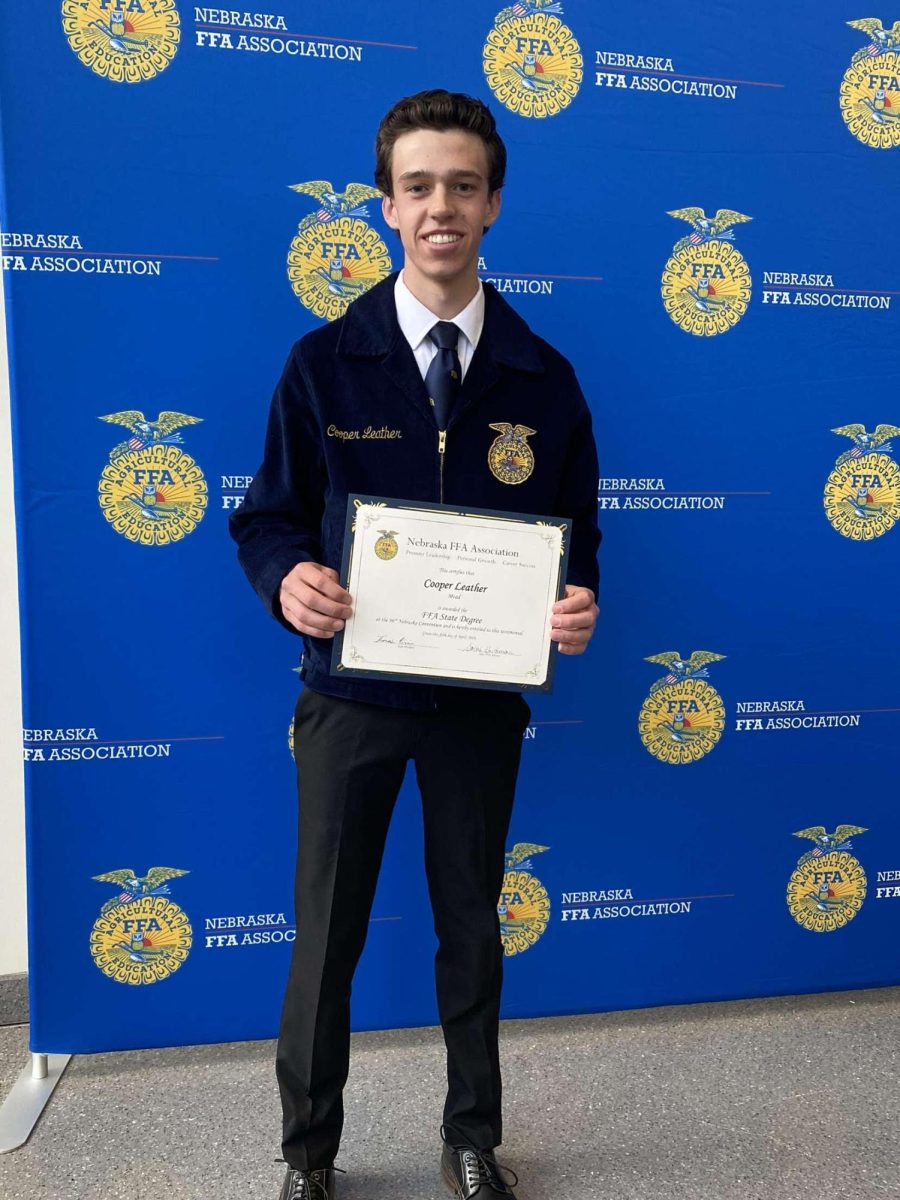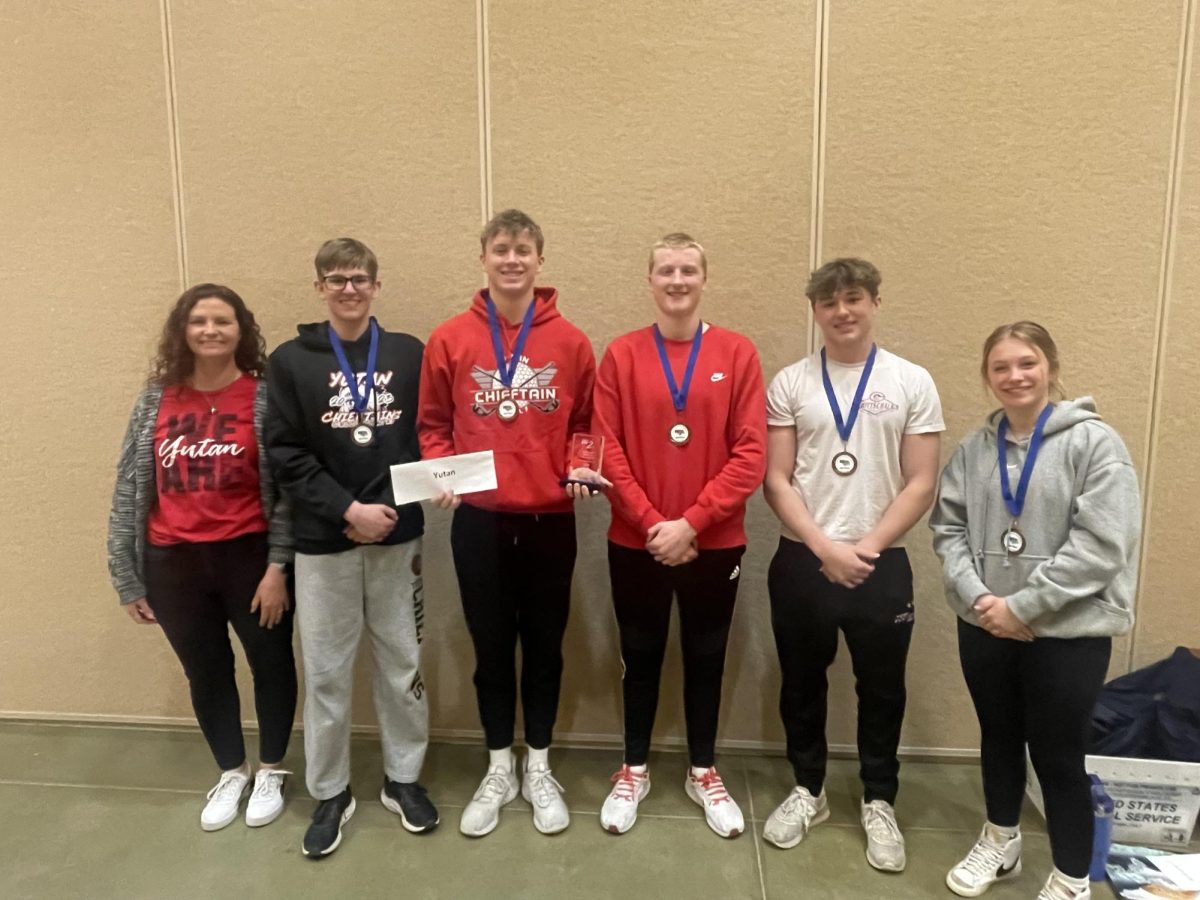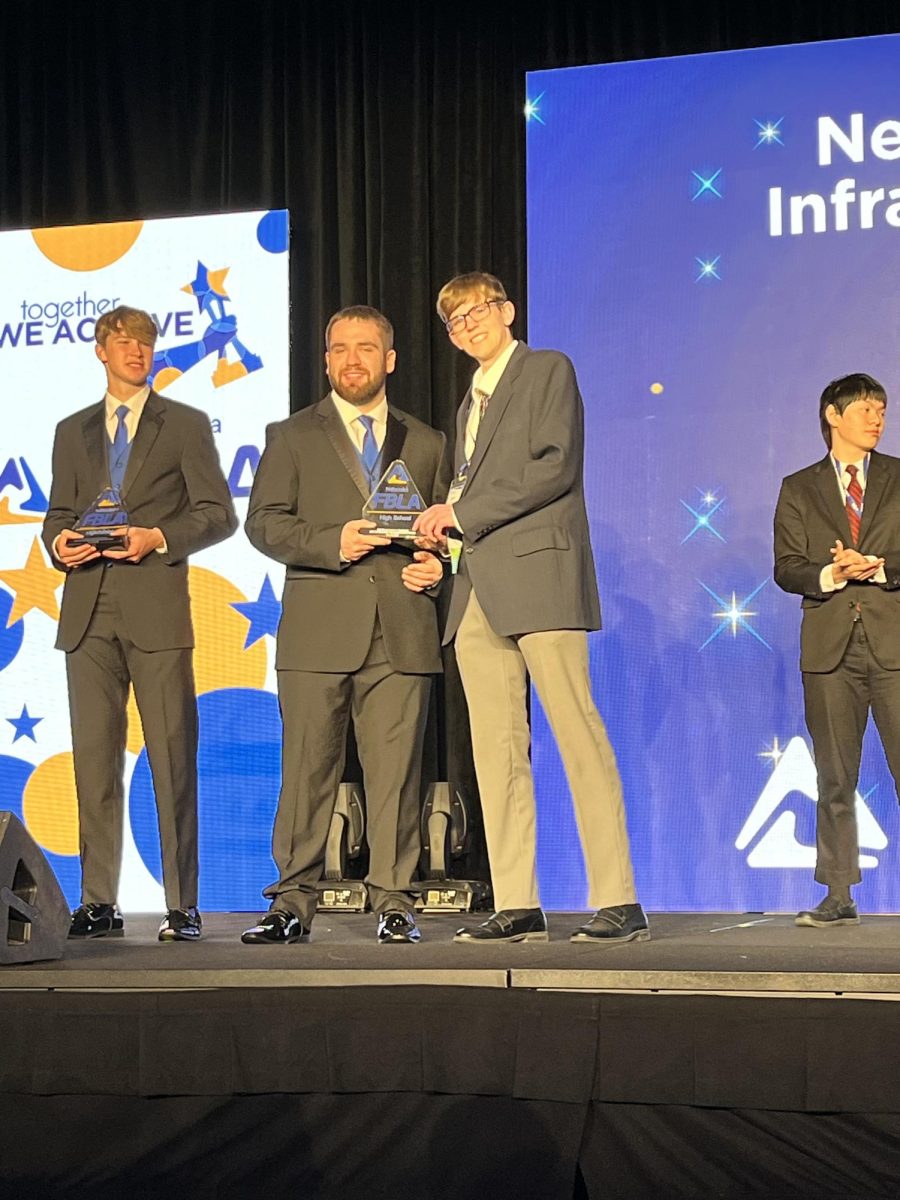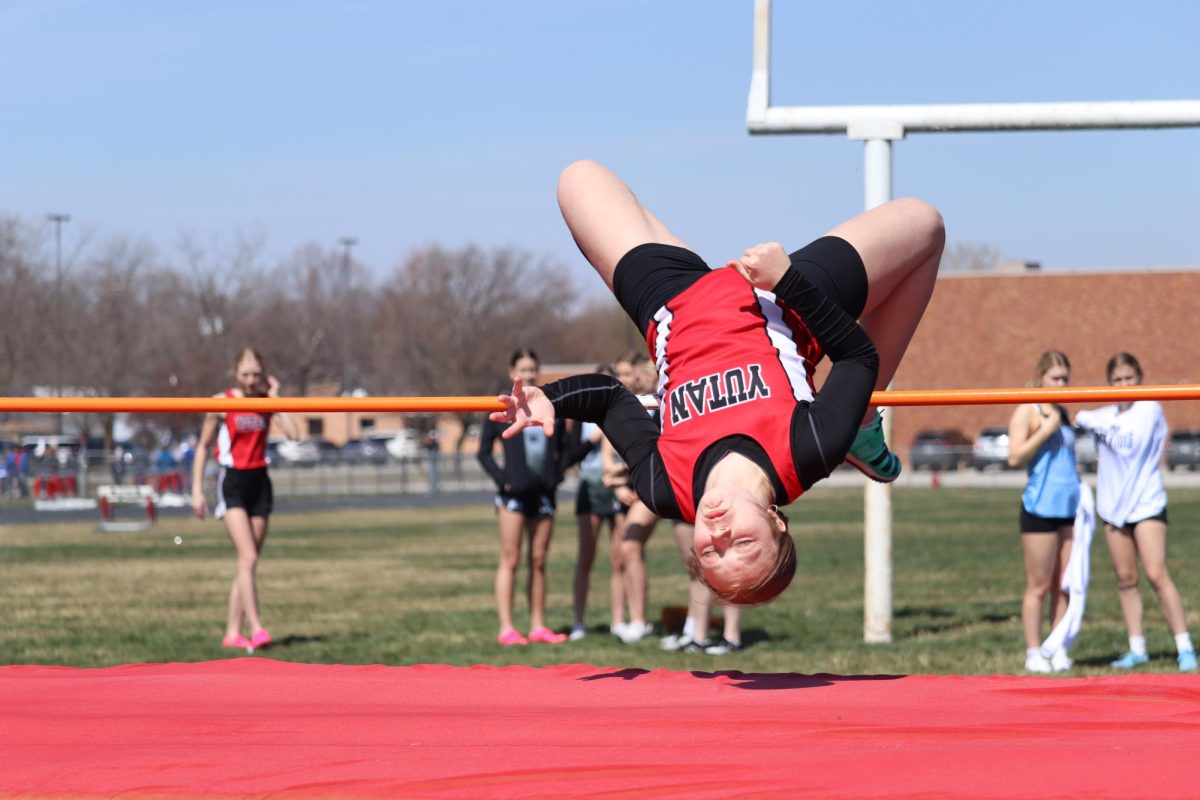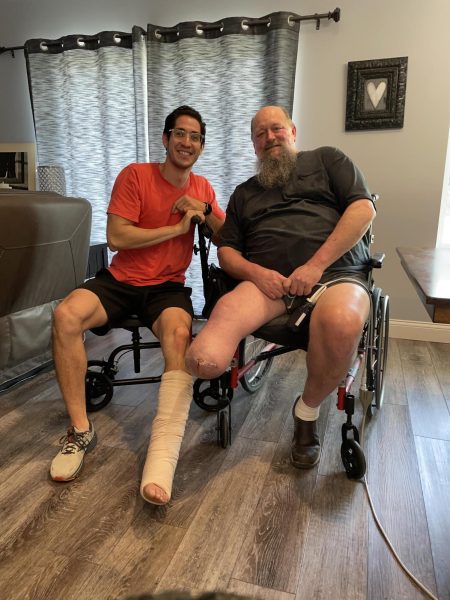
In early July, a group of Yutan teachers formed a team to play in the alumni basketball tournament, thinking it would be a fun way to reconnect with former students, but the results for one teacher were far from anticipated.
During this game, math teacher, cross country coach and track coach Joel Carrillo ruptured his Achilles tendon. Carrillo remembers hearing two snaps in his leg after an abrupt direction change on the court. He described the pain as being like “someone sawing through my calf with a bike chain.”
“I looked over and saw Carrillo sitting on the ground grabbing his calf,” said science teacher Leslie Heise, who was part of the teacher team. “He’s usually a pretty disciplined guy, and he looked like he was in excruciating pain, so I knew it must be more than a twisted ankle.”
Immediately after his injury, Carrillo went to the emergency room and had his leg looked at by professionals.
“I was disappointed to know that the next six months of my life would be spent in recovery,” Carrillo said.
In order to heal his leg, Carrillo had surgery and wore a soft cast for a few weeks, which transitioned into him wearing a boot until he could walk comfortably without one. Initially, he was unable to walk at all, but he hopes to be fully recovered around December, even though the doctors estimated February.
“I think my recovery is going fast and well. I think I’ll be good by December just because of how fast my leg is healing,” Carrillo said. “My age and activity level helps a lot.”
Before his injury, Carrillo ran recreationally, competitively and with his athletes. Few coaches do the entire practice with their runners every day, but this was not the case for Carrillo. Due to his injury, however, Carrillo has experienced a lot of uncertainty about his ability to run at all this year.
“I might not run at all… because it won’t be beneficial for my runners. I’ll be so out of shape,” Carrillo said. “I don’t think it’ll help anybody, and it’ll just upset me.”
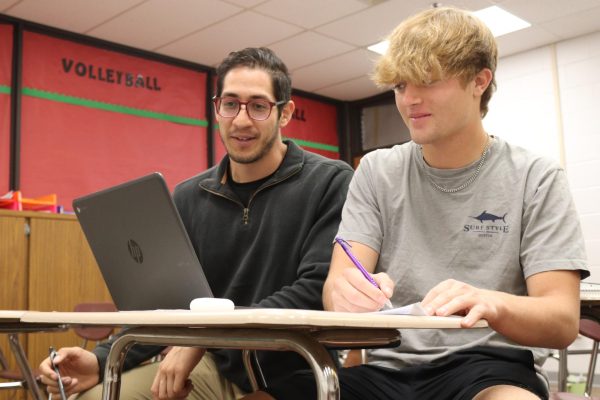
Now that he can’t run with his athletes, practices look different. In previous years, a typical cross country practice for the team would mean averaging around five miles per day with Carrillo. Since Carrillo can’t run for the time being, the runners take on the task alone.
“We watch me hobble to the practice, and then they warm up and then I watch them go,” Carrillo said. “Sometimes I get in the van and follow them, or we go to a specific spot where they can do loops, and I can watch them.”
The runners have also had to make adjustments with Carrillo not there to set the pace.
“I’ve had to take on a lot more responsibility this year,” senior runner Bryce Kolc said. “Since Carrillo isn’t out running with us, I have to make sure we keep a good pace and do things right.”
Outside of coaching, this injury has affected Carrillo in other ways, both physically and mentally.
“I struggled to go to sleep for all of July and the beginning of August [because I couldn’t] balance out my energy levels,” Carrillo said. “I don’t eat as much anymore…and my heart rate is no longer in the 40s, which is annoying.”
As far as how the future looks for Carrillo, running as seriously as he was before the injury may no longer be on the table.
“I might just give up entirely… It takes a lot of dedication,” Carrillo said. “I might just go to rock climbing and just call that good.”
If Carrillo has learned anything from his injury, he believes it’s beneficial to have multiple hobbies and activities to do and avoid dwelling on what can’t be changed.
“I read one of the books [Mrs.] Hansen gave me, I started watercolor, and I got into chess, more than I was before,” Carrillo said. “Just accept it and move on. Have a ton of hobbies. Get out of the house when you can.”


